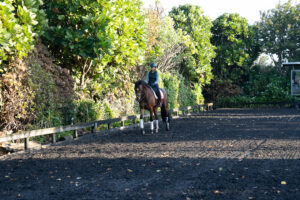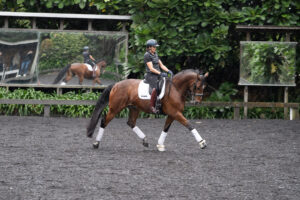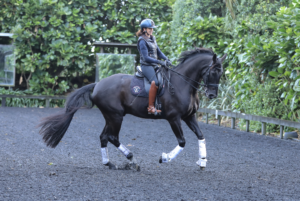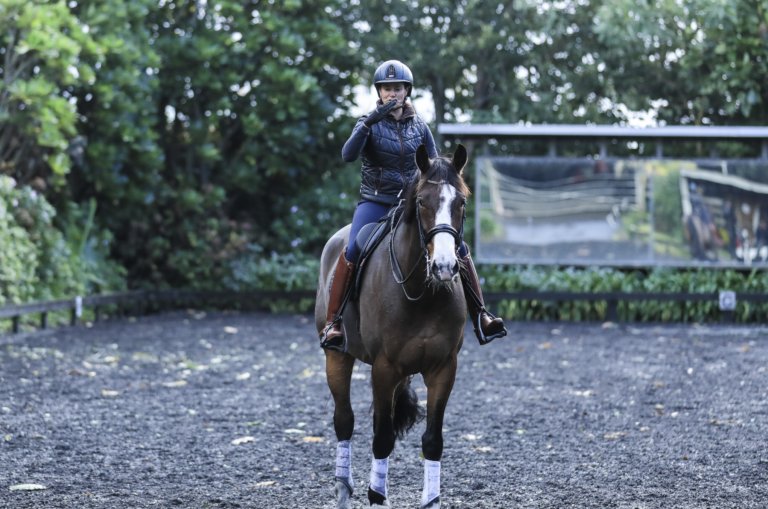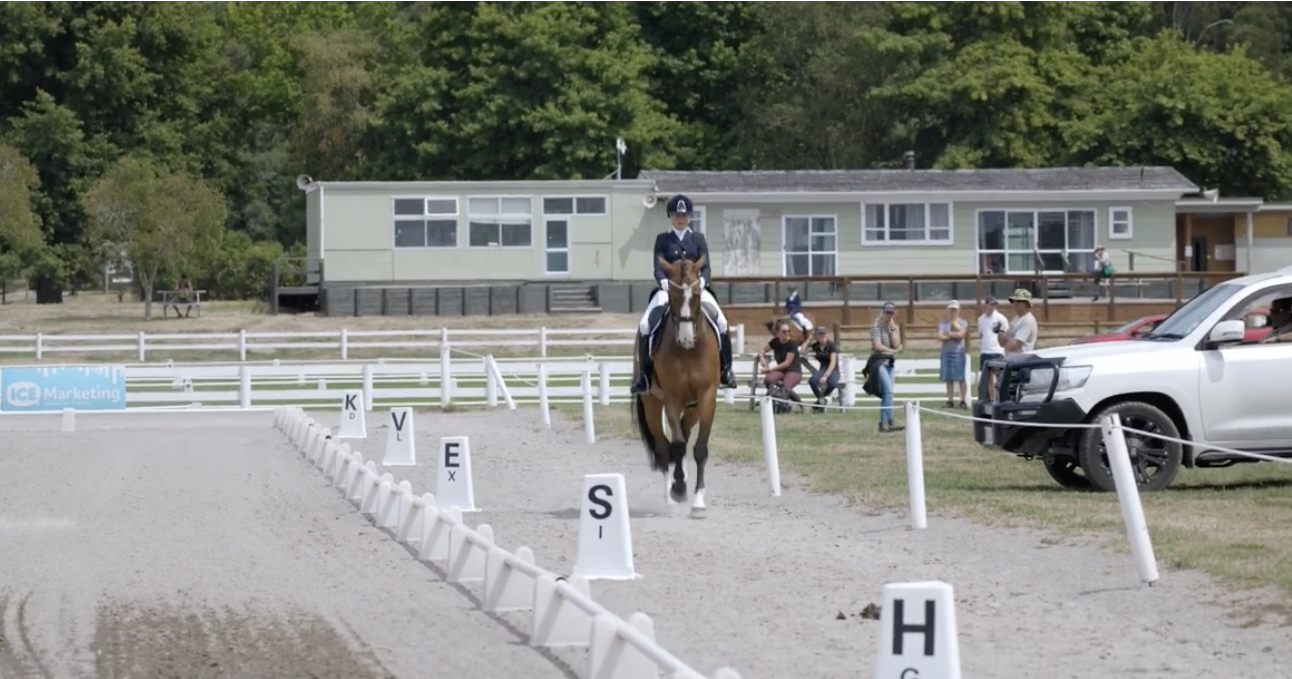Learn how the dressage pyramid of training works and understand how to implement this into your training at home.
Dressage is an equestrian sport that focuses on the harmony between the horse and rider. It requires skill, discipline, and practice to master, but with the help of the dressage pyramid of training, you can reach new levels of proficiency in the sport.
The dressage pyramid of training is a hierarchical system that helps riders develop their horses’ physical and mental abilities in a structured way.
The dressage pyramid of training is a framework developed by the German Equestrian Federation. The pyramid is divided into six levels, each of which represents a different aspect of training. The levels are:
- Rhythm
- Suppleness
- Contact
- Impulsion
- Straightness
- Collection
The first level of the pyramid is rhythm. Rhythm is the most fundamental aspect of dressage, and it refers to the horse’s regular, even tempo. A horse with good rhythm moves smoothly and evenly, with a clear beat to their gait. To achieve good rhythm, the rider must be able to maintain a consistent tempo throughout their ride, using their aids to encourage the horse to stay on beat.
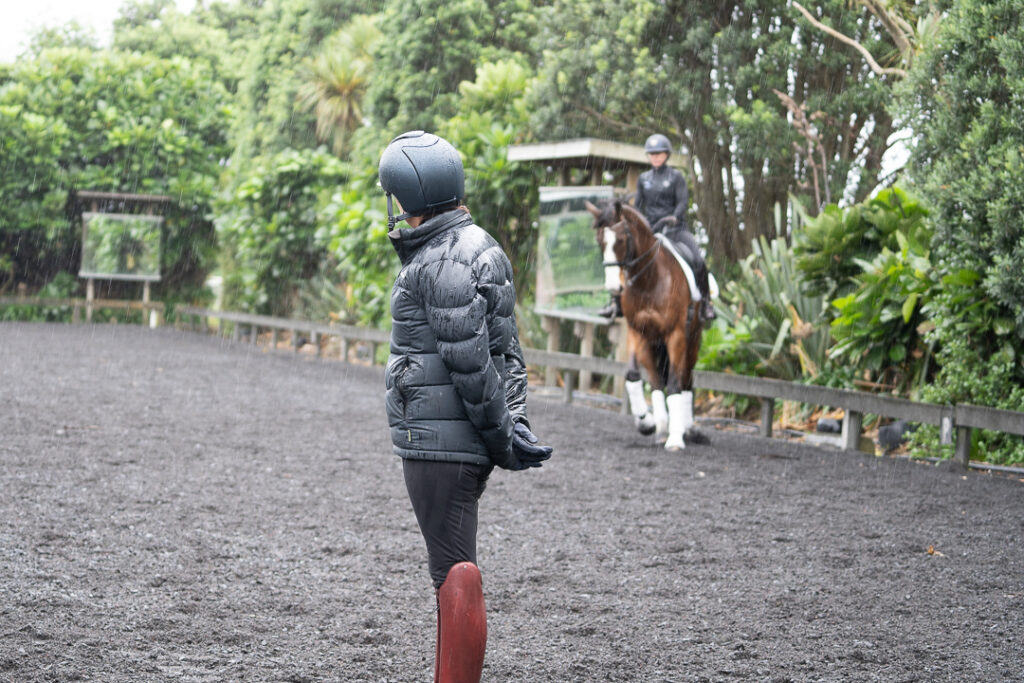
Once you’ve established good rhythm, the next level of the pyramid is relaxation. A relaxed horse is a happy horse, and a happy horse is more willing to learn and work. Relaxation in dressage refers to both the horse’s mental and physical state. Mentally, the horse should be calm and focused, with a willingness to learn and work. Physically, the horse should be loose and supple, with soft muscles and a relaxed body.
The third level of the pyramid is contact. Contact refers to the connection between the horse’s mouth and the rider’s hands. A good contact is essential for effective communication between the horse and rider. The rider must be able to give the horse clear, consistent signals through the reins, while still allowing the horse to move freely and naturally.
Once you’ve established good contact, the fourth level of the pyramid is impulsion. Impulsion refers to the horse’s energy and willingness to move forward. A horse with good impulsion is energetic, engaged, and willing to work. To achieve good impulsion, the rider must encourage the horse to move forward with their aids, without allowing them to rush or become tense.
The fifth level of the pyramid is straightness. Straightness refers to the horse’s ability to travel in a straight line, without leaning or drifting to one side. A straight horse is easier to ride and more comfortable for the rider. To achieve straightness, the rider must use their aids to keep the horse aligned and balanced, while encouraging them to stay on a straight line.
The final level of the pyramid is collection. Collection refers to the horse’s ability to shift their weight back onto their hindquarters, allowing them to perform advanced movements such as piaffe and passage. Collection requires a high degree of strength and balance, and it is the ultimate goal of dressage training.

So, how can the dressage pyramid of training help you master your dressage?
By focusing on each level in turn and building a solid foundation of skills, you can progress steadily towards your goals. By mastering rhythm, relaxation, contact, impulsion, straightness, and collection, you can become a more skilled and confident rider, and your horse can become more athletic, supple, and willing.
It’s important to remember that dressage is a journey, not a destination. No horse or rider is ever perfect, and there is always more to learn and improve upon. The dressage pyramid of training is a tool to help you navigate that journey and build a solid foundation of skills that you can continue to develop and refine over time.
So, whether you’re a beginner or an experienced rider, the dressage pyramid of training can help you achieve your goals and reach new heights of proficiency in the sport. By focusing on the fundamentals of rhythm, relaxation, contact, impulsion
To master your dressage training at home, get started today with these FREE resources and be sure to download our FREE guide to help you build and develop structure in your dressage training at home.
Improve your preliminary dressage marks
Improve your centre lines and halts
Improve your trot canter transitions
Master your competition riding
Check out these articles on our sister site Dressageridertraining.com
How to improve your riding posture and position
Dressage Position – What Is Alignment And Why Is It Important
Here we dedicate a whole website and training system to helping you as a rider. Learn all about rider fitness and uncover the four key elements to our DRT system. Download our free guide to get started.


